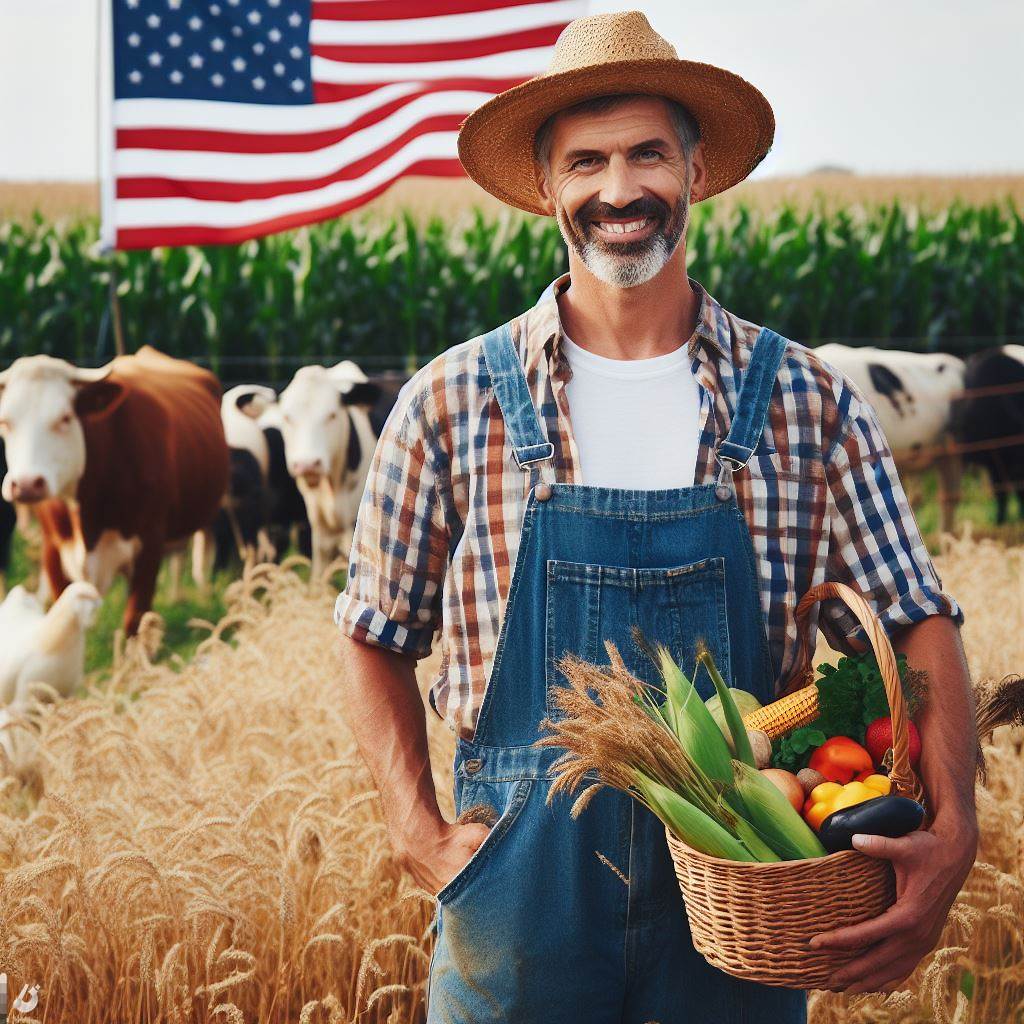Introduction
Eating local refers to consuming food that is produced within a close geographical area.
This practice has gained immense popularity in recent years.
A. Eating Local and its rising popularity
Consumers are increasingly interested in knowing where their food comes from and how it is produced.
Eating local allows them to support local farmers and businesses, as well as enjoy fresher and healthier food options.
B. Thesis statement highlighting the benefits for both consumers and farmers
Eating local benefits both consumers and farmers by promoting sustainable agriculture, supporting local economies, and improving the quality and safety of food.
Consumers benefits from eating local because it allows them to access fresher and healthier food options.
By purchasing food from nearby farms, consumers can be assured of its quality and safety.
Moreover, local produce tends to be harvested at its peak ripeness, ensuring maximum flavor and nutrient content.
In addition to personal health benefits, eating local also has positive impacts on the environment.
Supporting local farmers reduces the need for long-distance transportation, which contributes to carbon emissions.
Furthermore, local farms often prioritize sustainable agricultural practices, minimizing the use of harmful pesticides and chemicals.
Farmers also stand to gain from the growing trend of eating local.
With increased demand for locally produced food, farmers have the opportunity to sell their products directly to consumers, eliminating intermediaries and increasing their profit margins.
This direct connection also allows farmers to build relationships with their customers, gaining valuable feedback and loyalty.
Moreover, eating local boosts local economies by keeping money within the community.
Transform Your Agribusiness
Unlock your farm's potential with expert advice tailored to your needs. Get actionable steps that drive real results.
Get StartedWhen consumers purchase food from local farms and businesses, their money directly supports the livelihoods of farmers and stimulates the local economy.
In review, eating local offers a multitude of benefits for both consumers and farmers.
By choosing local food options, individuals can enjoy fresher, healthier, and more flavorful food while also supporting sustainable agriculture and local communities.
Benefits for Consumers
Eating locally sourced food has numerous benefits, not only for farmers but also for consumers.
By opting for locally produced goods, individuals can enjoy fresher and more nutritious food.
Here are some of the advantages that consumers can gain from eating local:
A. Fresher and more nutritious food
When it comes to food, freshness is key.
Locally sourced products are typically picked at their peak ripeness, which means they are packed with flavor and nutrients.
Fruits, vegetables, and other farm products can retain their quality for longer periods since they don’t have to travel long distances to reach consumers.
Moreover, local farmers often prioritize sustainable farming practices, which can result in higher quality produce.
They may use fewer pesticides and chemicals, allowing consumers to enjoy healthier options that are less likely to have negative effects on their well-being.
B. Supports local economy and businesses
Buying locally produced food is a great way to support the local economy and businesses.
When consumers choose to purchase from local farmers, they are directly contributing to the prosperity of the community.
This helps ensure that small-scale farmers remain in business and can continue providing fresh, local produce.
By supporting local agricultural businesses, consumers also help create more jobs within their community.
This increased employment can lead to a stronger local economy as money circulates within the region, benefiting everyone involved.
C. Reduces environmental impact
Choosing locally sourced food can have a positive impact on the environment.
The shorter distance travel required for these products means fewer carbon emissions are released into the atmosphere.
This reduction in transportation contributes to mitigating climate change and improving air quality.
Additionally, local farmers often adopt sustainable farming practices, which prioritize soil health and conservation.
By supporting such practices, consumers indirectly contribute to the preservation of natural resources and biodiversity in their area.
D. Builds a sense of community and connection to food
Eating locally fosters a sense of community by establishing a direct connection between consumers and the producers of their food.
Farmers’ markets and community-supported agriculture programs offer opportunities for individuals to interact with the people who grow their food.
Furthermore, consuming locally sourced food allows consumers to learn about specific food production processes and even engage with educational initiatives.
Showcase Your Farming Business
Publish your professional farming services profile on our blog for a one-time fee of $200 and reach a dedicated audience of farmers and agribusiness owners.
Publish Your ProfileThis connection to food can inspire individuals to make healthier choices and develop a greater appreciation for the hard work that goes into producing it.
In essence, choosing to eat locally sourced food offers numerous benefits for consumers.
From fresher and more nutritious options to supporting the local economy and minimizing environmental impact, going local is a wise choice.
It also creates a sense of community, fostering a deeper connection to the food we consume.
So, let’s embrace the advantages of eating local and enjoy the bounty our local farmers have to offer!
Read: Farmers’ Stories: Voices Behind Your Food
Benefits for Farmers
When it comes to eating local, the advantages extend beyond just the consumers.
Farmers also reap numerous benefits from adopting a direct sales approach and focusing on local markets.
A. Direct sales and higher profits
By selling their produce directly to consumers, farmers can eliminate the middleman and retain a larger portion of the profits.
This direct sales approach allows them to set their own prices and generate higher revenues.
In addition, farmers can establish a personal connection with their customers, which can lead to loyal patronage and repeat business.
Building relationships with consumers empowers farmers to better understand their needs and preferences, enabling them to cater to their specific demands.
B. Reduced transportation and distribution costs
When farmers sell their products locally, the need for long-distance transportation is minimized.
This significantly reduces transportation costs, as well as carbon emissions associated with long-haul shipping.
Moreover, local sales eliminate the need for middlemen, wholesalers, and distributors, streamlining the supply chain and further cutting costs.
Farmers can pass on these savings to consumers or invest them back into their operations to improve product quality.
C. Better relationships with customers
Through direct sales at local markets, farmers have the opportunity to interact face-to-face with their customers.
This direct engagement allows farmers to educate consumers about their farming practices and highlight the quality and freshness of their produce.
Developing personal relationships with customers fosters trust and loyalty, as consumers feel more connected to the source of their food.
Farmers can receive valuable feedback and suggestions from customers, which can be used to enhance their products and meet changing market demands.
D. Diversified product offerings
Local markets often provide farmers with a platform to diversify their product offerings.
By directly interacting with consumers and understanding their preferences, farmers can expand their range of products to include unique varieties or niche items.
This diversification enables farmers to cater to different tastes and dietary requirements, attracting a wider customer base.
It also promotes biodiversity and supports the preservation of traditional crops and farming methods.
In general, eating local not only benefits consumers but also empowers farmers in several ways.
Direct sales and higher profits, reduced transportation costs, better customer relationships, and diversified product offerings are just a few of the advantages farmers can enjoy by focusing on local markets.
Supporting local farmers is not only healthy for us but also for the entire agricultural community.
Read: Local Foods Impact: A Consumer’s Guide

Challenges of Eating Local
When it comes to eating local, there are certain challenges that both consumers and farmers face.
Despite the numerous benefits, these challenges can sometimes make it difficult to fully embrace local food.
A. Limited availability and seasonal variations
One of the main challenges of eating local is the limited availability of certain foods throughout the year.
Unlike mass-produced food, local produce and products are often seasonal, relying on the natural growing cycles.
This means that certain fruits, vegetables, and even meats may only be available during specific times of the year.
Consumers must adjust their diets accordingly and learn to embrace the diversity of seasonal produce.
Additionally, seasonal variations can impact the quality and abundance of local food.
Unfavorable weather conditions or natural disasters can affect crop yields and overall availability, making it more challenging to rely solely on local sources.
B. Higher prices compared to mass-produced food
Another challenge of eating local is the higher cost associated with these products.
Local food often comes with a higher price tag due to several factors, including smaller scale production, the absence of economies of scale, and higher production costs.
Local farmers typically cannot compete with large industrial farms in terms of production efficiency, which drives up the prices of their products.
While the higher cost can be seen as an investment in supporting local agriculture, it can be a deterrent for those on a tight budget.
Showcase Your Farming Business
Publish your professional farming services profile on our blog for a one-time fee of $200 and reach a dedicated audience of farmers and agribusiness owners.
Publish Your ProfileC. Need for education and awareness in consumers
Lastly, there is a need for education and awareness among consumers when it comes to eating local.
Many people are simply not aware of the benefits of supporting local farmers and the impact their food choices can have on their communities.
Consumers need to understand the value of buying locally produced food, such as the lower carbon footprint, reduced transportation costs, and increased freshness and nutritional value.
Without this knowledge, they may be more inclined to choose mass-produced options without considering the impact on local farmers.
Education initiatives, such as cooking classes, farm tours, and community events, can help bridge this gap and create a more informed and supportive consumer base for local farmers.
While there are indeed challenges to eating local, they should not overshadow the benefits for both consumers and farmers.
By actively addressing these challenges, such as finding creative solutions for limited availability, supporting local food co-ops, or advocating for policies that promote local agriculture, we can create a more sustainable and resilient food system for future generations.
Read: Organic Trends in Farm-to-Table Dining
Overcoming Challenges
When it comes to eating local, there are several challenges that both consumers and farmers face.
However, there are various strategies and initiatives that have been implemented to overcome these challenges and promote the benefits of local food.
A. Local food cooperatives and farmer’s markets
One way to support and overcome challenges in eating local is through the establishment of local food cooperatives and farmer’s markets.
These platforms provide a direct link between consumers and farmers, allowing them to interact and exchange information.
By shopping at farmer’s markets, consumers can purchase fresh produce directly from local farmers, ensuring the quality and authenticity of the food.
This not only supports local farmers financially but also fosters a sense of community and connection.
B. Community-supported agriculture (CSA) programs
Another effective method of overcoming challenges in eating local is through community-supported agriculture (CSA) programs.
These programs involve consumers becoming members or subscribers of a local farm, paying in advance for a share of the farm’s produce.
In return, members receive a regular supply of fresh, seasonal produce from the farm throughout the growing season.
CSA programs provide stable income for farmers, reduce food waste, and strengthen the relationship between consumers and the agricultural community.
C. Online platforms and delivery services for local produce
Advancements in technology have also played a significant role in overcoming challenges in eating local.
Online platforms and delivery services have emerged, making it easier for consumers to access and purchase local produce.
These platforms allow consumers to browse a wide selection of local products, place orders, and have them conveniently delivered to their doorstep.
By eliminating transportation barriers and increasing accessibility, online platforms and delivery services support local farmers and expand their customer base.
D. Government policies and incentives to support local farming
Lastly, government policies and incentives have been implemented to address challenges and promote local farming.
Supportive policies include financial aid, grants, and tax incentives to encourage farmers to transition to sustainable and locally focused practices.
Incentives such as subsidies for farming equipment, infrastructure investments, and educational programs also help farmers overcome obstacles and invest in local production.
These policies not only boost the local economy but also contribute to environmental sustainability and the preservation of local food systems.
In a nutshell, despite the challenges that come with eating local, various strategies and initiatives have been introduced to overcome them.
Local food cooperatives, farmer’s markets, CSA programs, online platforms, delivery services, and government policies all play a crucial role in supporting local farmers, promoting community engagement, and ensuring consumers have access to fresh, healthy, and environmentally friendly produce.
By actively participating in these initiatives, we can collectively reap the benefits and support the growth of local food systems.
Read: Farm-to-Table 101: Basics of Farm-Fresh Eating
Delve into the Subject: Your Guide to Urban Farming Events
Learn More: Urban Beekeeping: A Farm-to-Table Buzz
Conclusion
Eating local provides numerous benefits for both consumers and farmers.
It guarantees fresh and high-quality produce while supporting the local economy.
By supporting local farming, consumers can enjoy the rewards of healthier and more sustainable food options.
It is vital for individuals to prioritize buying from local farmers to ensure the continued success of local agriculture.
In this way, everyone can contribute to a thriving community and a greener future.




